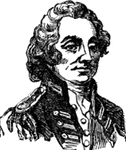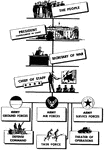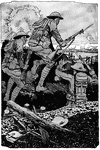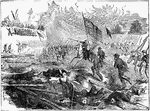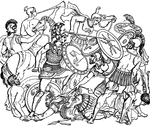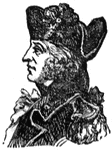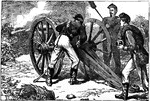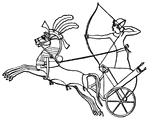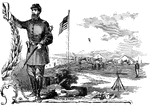
Aid-de-camp
"New Jersey Camp at Arling, Va., designated as Camp Princeton in honor of one of the Revolutionary battle…

The Siege of Alicant
The Siege of Alicant, Spain in 1709. Caption bellow illustration: "The mine at last blew up; the rock…

Armor-Piercing Shell
"Armor-piercing shells are projectiles so constructed as to bore through the metallic plates with which…

Armor-Piercing Shell
"Armor-piercing shells are projectiles so constructed as to bore through the metallic plates with which…

Assyrian Soldiers Fighting
A depiction of two soldiers fighting for Assyria, using bow and arrows against their enemies.

Nana, The Phoenician Astarte
An image of the divinity whom the Phoenicians worshipped as Astarte, or the goddess associated with…
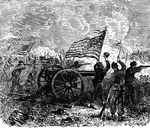
Battle of Atlanta
Showing the Battle for Atlanta, which Sherman won for the Union during the Civil War.

Attack on the Narraganset Indians at South Kingston
Attack on the Narraganset Indians at South Kingston by the leaders of the Massachusetts Bay Colony.
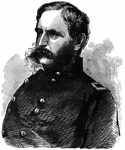
General Christopher C. Augur
"General Augur, born in New York in 1821, was graduated from the United States Military Academy in 1843.…

General W. W. Averill
"General Averill, born in Cameron, Steuben County, N. Y., November 5th, 1832, was graduated at the United…
!["[African American] drivers of the baggage train attached to General Pleasonton's Cavalry brigade watering their mules in the Rappahannock. General Pleasonton's cavalry was attended by a very efficient forage brigade, consisting of mules and [African American] riders. Our sketch represents their drivers taking them to water at the river. The hard work these animals will endure is something wonderful, and justifies the high estimation in which they are held in the army." — Frank Leslie, 1896](https://etc.usf.edu/clipart/11000/11025/baggagetrain_11025_mth.gif)
Baggage Train
"[African American] drivers of the baggage train attached to General Pleasonton's Cavalry brigade watering…

Banquet of the Officers of the Civic Guard
This painting was done by Frans Hals. It is an important piece from the military collection by the artist.…

Bouquet Battery
"The Bouquet Battery, commanding the viaduct over the Patapsco River, on the Baltimore and Ohio Railroad,…

General George D. Bayard
"General Bayard, born in Seneca Falls, N. Y., December 18th 1835, died December 14th, 1862, was graduated…

Bellaire
"Bellaire, O.- Steamboats conveying troops and munitions of war for the Federal forces on the Great…

Bellaire
"Bellaire, O.- Steamboats conveying troops and munitions of war for the Federal forces on the Great…

Bellaire, Ohio
"Bellaire, O.- Steamboats conveying troops and munitions of war for the Federal forces on the Great…
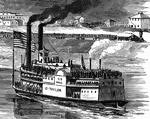
Bellaire
"Bellaire, O.- Steamboats conveying troops and munitions of war for the Federal forces on the Great…
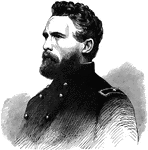
General Hiram G. Berry
"General Berry, born in Thomaston (now Rockland), Me., August 27th, 1824, died at Chancellorsville,…
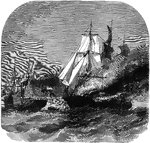
Harvey Birch
"Burning of the American merchantman "Harvey Birch," of New York, Captain Nelson, in the British Channel,…

Blue Ridge Pass
"The victory at Blue Ridge Pass, Sunday, September 14th, 1862- infantry charge, and rout of the Confederates.…

Ancient bows
"Represents two forms of the bow; the upper, the Scythian or Parthian bow enstrung, agreeing with the…
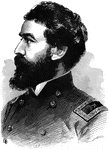
General John M. Brannan
"General Brannan, born in the District of Columbia in 1819, was graduated from the United States Military…

Howard's Bridge and Mill
"Advance of the Federal troops, near Howard's Bridge and Mill, four miles from Big Bethel, on the road…

Commencement of Bull Run
"The Confederate forces under General Jackson advancing upon the Rapphannock Station at the river. Federal…
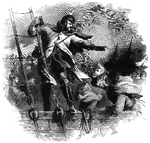
Burnside Expedition
"Burnside Expedition- the fleet and transports off Hatteras during the storm- the general giving orders.…

Burnside Expedition
"The Burnside Expedition- melancholy deaths of Colonel J. W. Allen, Surgeon Waller and the Second Mate…
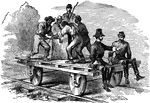
General Burnside
"Traveling in state"- General Burnside on the road from New Berne to Beaufort, N. C.
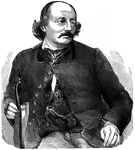
General Benjamin F. Butler
"General Butler was born in Deerfield, N. H., November 6th, 1818. At the time of President Lincoln's…
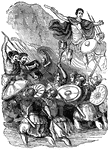
Caesar in England
"All histories of England commence with the invasion of Julius Caesar, the earliest event in that quarter…

Camp Dennison
"Camp Dennison, sixteen miles above Cincinnati, on the banks of the Miami River, General Cox commanding-…

Camp Zagonyi
"Camp Zagonyi, encampment of Fremont's army on the prairie, near Wheatland, Mo., October 14th, 1861.…

Camp Zagonyi
"Camp Zagonyi, encampment of Fremont's army on the prairie, near Wheatland, Mo., October 14th, 1861.…

Camp Zagonyi
"Camp Zagonyi, encampment of Fremont's army on the prairie, near Wheatland, Mo., October 14th, 1861.…
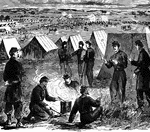
Camp Zagonyi
"Camp Zagonyi, encampment of Fremont's army on the prairie, near Wheatland, Mo., October 14th, 1861.…

Stuart's Cavalry
"Stuart's Confederate Cavalry, after their successful raid into Pennsylvania, escaping with their stolen…

Battle of Cedar Mountain
"Battle of Cedar Mountain, fought Saturday, August 9th, 1862, between the Federal troops commanded by…

Battle of Cedar Mountain
"Gordon's and Crawford's Brigades driving the Confederate forces from the woods at the Battle of Cedar…

Battle of Cedar Mountain
"The Confederate batteries shelling the Federal position on the night of the Battle of Cedar Mountain,…
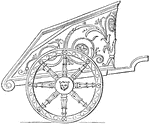
Chariot
"Arms and a chariot are here assigned to June through not properly a warlike goddess. The idea itself,…

Assyrian War Chariot
"The stalwart character and aggressive bearing of the Assyrians were particularly shown in war. The…

Greek Chariot
A two wheeled car or vehicle used in various forms by the ancients in war, in processions, and for racing.

Greek Chariot
"In the battles, as depicted by Homer, the chiefs are the only important combatants, while the people…

Battle of Charles City
"Battle of Charles City Road- charge of the Jersey Brigade- the first New Jersey brigade, General Tayler,…

Valley of Chickahominy
"Valley of the Chickahominy, looking southeast from the vicinity of Mechanicsville, the scene of the…
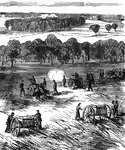
Valley of Chickahominy
"Valley of the Chickahominy, looking southeast from the vicinity of Mechanicsville, the scene of the…
